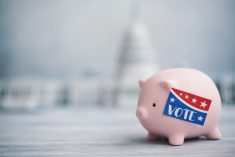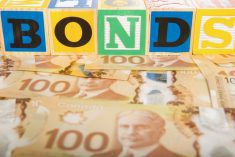Investing, in the broadest sense, is about predicting what will be valuable in future. A century and a half ago, railroads knit nations together. Then came airplanes. Along the way, the greatest empires of central Europe — Germany and Austria — perished, China sank and rose again to produce dollar billionaires faster than any other country, and Japan opened up and went to war, was destroyed, and became an economic power once more. Fifty years before each event, anyone predicting these events would have been thought daft.
Investing in early stage ideas is problematic. The high-risk path is strewn with failure. However, if you spread your financial commitments widely and keep costs down, your upside will be greater than your downside. This is no way to get rich quick, but it will keep you from becoming suddenly poor.
Read Also

Gentle treatments for pain in the neck
Heading toward year-end, people unknowingly tense up against the cold and busyness, causing neck pain that can often be treated with appropriate support and gentle mobility, athletic therapist Kathlyn Hossack says.
Risk can turn from theory to disaster very fast. Atari and Commodore 64 were primitive computers, if anyone remembers. LEOs were low earth orbit satellites that cost hundreds of millions and then were made obsolete by cell phone towers. Airlines rose and collapsed. Remember Eastern Airlines, Pan American World Airways, TWA, Swissair, Sabena, and our own Canadian Pacific and Wardair? It is not just the idea, but the survivability of companies that turns concepts into long term gains.
How do you know what to do when rules seem to change so quickly? The integrated North American car assembly industry may be shattered by the American president. Quebec may keep or lose its protected dairy industry depending on what happens in trade negotiations. How can a person without a crystal ball make rational decisions? I don’t think you can.
Look back a century to 1918. Germany was financially shattered by the First World War, ditto Austria. Both lost their monarchs, then were united in one empire, the Third Reich, by a movement led by a failed artist who had a gift for making rousing speeches. That the most robust monarchies on the continent would flop was unpredictable — before they did. That Germany would be reindustrialized by the American Marshall plan was unimaginable and actually against the advice of the Secretary of the U.S. Treasury who, in 1944, had urged that Germany be left in defeat and ruin never to rise again.
In 1960, IBM owned the world of mainframe computing. In 1990 it was a big player still. Today, who cares? IBM was the world 30 years ago, now it is just one of many companies in computer services.
And think of the flops of the last 20 years: dot.coms with no business plans, Nortel Networks with unbelievable and often disingenuous accounts, Enron — an outright fraud. How can a sane person invest in this stew of lies and hopes?
The analysts
When you examine the record of analysts paid for their crystal ball work, you come away scratching your head. The CXO Advisory Group, a Massachusetts-based think tank, rates gurus. Here is what they found:
- The average guru has a forecasting accuracy of about 47 per cent.
- The distribution of forecasting accuracy by the gurus looks very much like what you would expect from random outcomes. That makes it very difficult to tell if there is any skill present.
- The highest accuracy score was 68 per cent; the lowest was 22 per cent.
The gurus may be smart and have degrees from MIT and Harvard. But most work for investment banks who pay their salaries and sell the stocks they rate. Gurus who want to keep their fat paycheques do not tell the world that their firms’ clients are money losing enterprises with overpaid managers.
I think you can do better with a combination of skepticism and a refusal to pay more than about 20 times annual earnings for anything, plus an insistence of a dividend rate of 2.5 per cent or more and, as well, refusal to buy when the dividend yield goes to seven per cent or higher — a sure sign the market thinks the dividend will be cut. Be a skeptic and reject others’ advice even if they have fabulous titles and brilliant resumes.
In the dot.com era from 1998 to 2000, some stock market analysts urged investors to pour money into companies that had no profits, no sales, sometimes no business plan, but did have a period in their name. This advice produced astonishing runups in price and then equally astonishing flops when folks realized they were buying wind without sails.
Today, we have imaginary money being priced to the heavens by people who don’t know what characteristics money should have. Imaginary money that behaves like a rocket on the way up and then flops like a bad North Korean missile test is not money. It is not even a good commodity. But novelty and lack of understanding propel Bitcoin and about 800 other cryptocurrencies to the heavens.
As for cannabis, it may work. It is, after all, an agricultural commodity with a known and vigorous market. Valuation of the product with consumers having vast choices of this or that bud is going to be a challenge, as is the precise legality of the stuff in various jurisdictions.
So we come back to the problem of finding solid investments.
In the end, there is no substitute for doing your own research, being a cynic, never paying too much for somebody else’s business, and keeping plenty of cash on hand so that, if things turn bad, you won’t be forced to sell at fires sale prices. Caution cuts risk. If there is one lesson for off-farm investing, it is just that. Be early and be at risk. Be late and lose.














